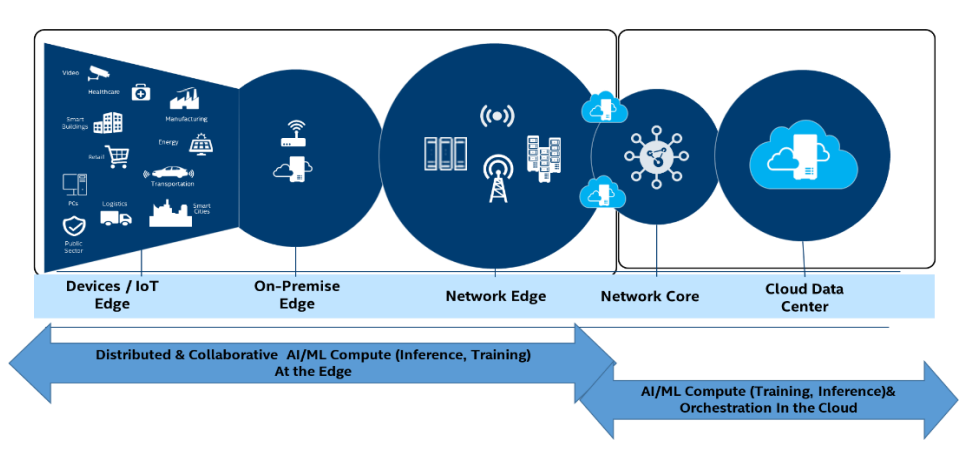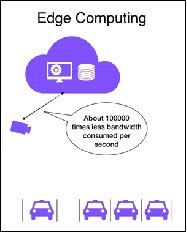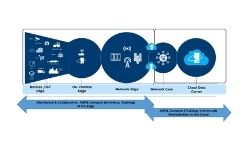Articles
AI-EDGE

By ELDAAS
February 26, 2020
February 26, 2020
AI-EDGE
Introduction
EDGE AI is nothing but a technological combination of two words, where AI algorithm is processed by the local host or end device as per the user requirement which has to be programmed in the predefined AI algorithm developed by the user. It is not compulsory for EDGE device to have a connection for functioning and processing of the data. The application device will perform the required operation and then it will store the data into the application device and whenever device will get internet connection it will store the data into the cloud for storage and further process. The main thing with EDGE is that it allows mission-critical and time – sensitive decisions to be made fast, more reliably and with greater security. The main reason for combining AI with EDGE is because of the growth of smart devices like smart phones, watches and sensors placed in machines and infrastructure.

EDGE Based Computing Block diagram
The major advantages of EDGE AI are as follow:
- The data processing speed for EDGE AI-enabled devices is really fast as compared to centralized IoT models. With a processing time of less than a few milliseconds, the risk of data getting tampered during transit is very less. These devices also include enhanced security features, as some level of data privacy can be added at the device stage itself and can be sent to the cloud
- EDGE AI gives a solution to one of the most prevailing problem – latency. Low latency and real-time insights help in building great customer experiences. The problem with latency is major thing to be taken where the delay of few milliseconds can make a big impact.
- Let’s have a further more detailed look into latency for better understanding about how delay issues are being solved with EDGE-AI computing. As latency is a by-product of distance,One example can be taken into consideration, where under very best condition it takes data about 21 milliseconds to travel from New York to San Francisco. But this numbers are not the exact because of some other factors which includes bandwidth of the data transferred rerouting near the data endpoint can add between 10 to 65 milliseconds of latency.This is how things work when we have to directly send data to the server. If we consider this kind of topology being used for an autonomous vehicle which has to drive down any road safely, it must observe the road in real-time and stop if a person walks in front of the car. In such a case, processing visual information and making a decision with the latency of above specified time won’t be a possible thing which in turn will be a big risk for the pedestrians. But with the case of EDGE computing architecture the above specified risk of autonomous vehicle can be eluded to a great extend because it provides an excellent way to reduce the latency where the major decisions will be taken by the EDGE devices instead of directly sending it to the cloud, which will give us the filtered data and thereby reducing the bandwidth of the data to be transferred to the cloud in this process reducing the latency. Another advantage is that we can locally store the data into our EDGE devices; this will help the user when they won’t have the network availability to transfer the data and whenever network will be available the data can be transferred to cloud.

EDGE Computing
- The cost savings alone can be a driver also towards deploying an edge-computing architecture
- Another thing is the decentralization for AI as for the PCs the amount of computation power is limited that can be put into cameras, sensors or smartphones
- Many devices that are not connected to power sources raise the problem for battery life and power dissipation. But this problem won’t arise when a decision requires massive computational power and need not take into real world
EDGE Applications
- Surveillance and Monitoring:
Deep Learning-enabled smart cameras could locally process captured images to identify and track multiple objects and people, detecting suspicious activities directly on the edge node. These smart cameras minimize communication with the remote servers by only sending data on a triggering event, also reducing remote processing and memory requirements. Intruder monitoring for secure homes and monitoring of elderly people are typical applications.
- Autonomous Vehicles:
A smart automotive camera or sensor can recognize vehicles, traffic signs, pedestrians, roads, and objects locally, sending only information needed to perform autonomous driving to the main controller. A similar concept can be applied to robots and drones.
- Expression Analysis to improve shopping, advertising, or driving:
An individual’s emotional reaction can provide clues to their degree of acceptance of a service, like/dislike of various products shown on the shelves in a shop, or their level of stress, which can be used to understand and modulate the type and the amount information delivered.
- Home Automation:
Smart homes are enabled with many smart features. Features such as mobile app unlocking system, enhanced security, control over household equipment such as refrigeration, telephone, television, computer systems, fans, and even microwave oven. These are few of the very large features of Smart Homes facilitates. Many more EDGE based applications are available and still, research is being done in certain sectors like education systems and healthcare trying to bring out the technological improvement and opportunities for a better easy life.
Conclusion:
- EDGE-AI with all sorts of benefits is going to hit the semiconductor market in a larger manner because of its advantage in many different ways which includes cheaper cost, highly responsive, better security features, low power consumption and easy to manage.
Read Our Articles

- By ELDAAS
- May 21, 2020
Objective of this article is to summarize the concept of Environmental Stress Screening (ESS), its benefits, process and applicability for various stages in the manufacture of Electronic Equipment. .. Read More



